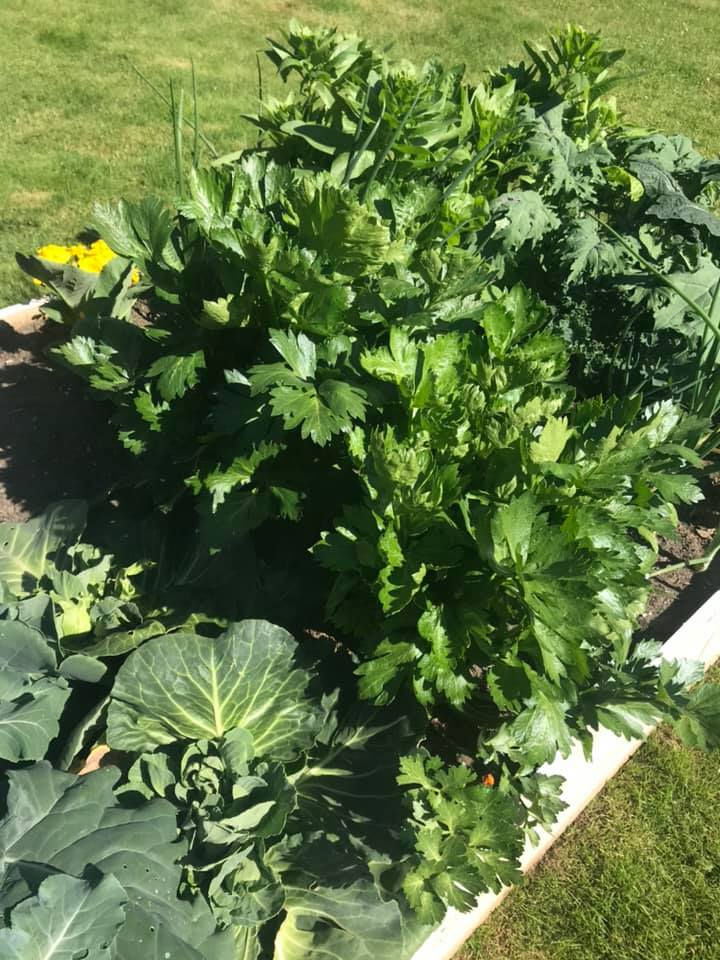Stretching the gardening season with seed saving
- mm19713
- Apr 29, 2023
- 4 min read
It's almost May and for some reason did not post this when I had intended. But seeing as we are almost ready to start our growing season this year using seeds saved last year, perhaps this post is a good reminder to think about seed saving as you grow what you love. Enjoy the sun peeps!
Summer weather is drawing to an end here in Abbotsford, B.C. It's ironic that I write that sentence because it is mid-October and what is usually colder, wetter weather hasn't arrived yet. Our nights are cooler now with dew on the lawn in the mornings but the days are sunny and warm. We haven't had any significant rain for months.
Update: I didn't get around to fully finishing this post because our summer lasted until mid-November and I spent it out in the yard maximizing my growing season and finishing off the greenhouse build. We had two weeks of Fall after that and then a hard and fast winter with 21 days of snow and temperatures below -3 degrees Celsius. It's now Christmas eve and I finally have a few moments to breathe and finish this post! Happy Holidays everyone!
In mid-Novemer, my garden was still producing for which I am grateful. My garden trellis was full with so many cucamelons hanging down like dingle balls. If you've never had a cucamelon before, they are from Mexico and are a tangy, bite-sized cucumber that looks like a watermelon. There are cucumbers and loofahs there too.

The butternut squashes were abundant with over 50+ pounds harvested. The mashed potato squashes are prolific too. I gifted friends and family with some of them as they were too many for us to eat. We enjoyed them with our Thanksgiving dinner (the second week in October in Canada) and will enjoy them tomorrow with our turkey dinner too.
If you store them in a dark cool place, you can eat them until you are ready to harvest the next batch.

The tomatoes have been abundant but were slow to ripen so the longer summer was a good thing. Some plants have 30 or more tomatoes. They are juicy, meaty, and incredibly flavourful. I have started to can Pico de Gallo for us to enjoy during the winter. Roasted tomato sauce will be next. I will create a separate post with my favourite recipes for both.

My celery is going strong and will continue to produce through the winter. This variety, Tango, is very hardy in our West Coast climate and can withstand freezing temperatures and snow.

While I continue to enjoy this weather, I know Fall and Winter will be here in the blink of an eye and my thoughts turn to seed saving. I successfully collected seeds last year and used many to grow the garden this year. I could also share seeds with my friends. An added bonus was that it saved money and allowed me to start my plants earlier. This year, for many reasons, the cost of seeds rose exponentially so saving seeds is a good idea. Look in your local area to see if there any seed swaps happening around you (Facebook has groups created for this purpose). Seed swaps are awesome and a great way to meet other gardeners, try new varieties and save money. My local gardening group, despite being amazing for gardening advice, is also a great place to post up any extra seeds I have and where I can potentially get seeds from others in the group.
When looking to seed save, I start to look for plants that have grown well and have good-sized fruit or blooms. Those are the ones that I want seeds from. Once I identify the plant I want seeds from, I start to let the flowers go to seed. A note: squashes cross-pollinate so if you are wanting to harvest pumpkin or other squash seeds and they have been growing amongst other squashes, you might get a hybrid variety. I call those my "surprise seeds".
Throughout the summer I deadhead dying flowers to keep the plant producing. Letting flowers go to seed means I stop deadheading and allow the seeds to ripen and mature on the flower. Once the flower has seeded, I pick the flower or the seed pod and let it dry out in the house for 3-4 weeks. Fair warning, laying out and keeping the different varieties separate can take over a large space for an extended time. I have tried to minimize this by placing smaller seeds (or those with a smaller amount of seeds, in small bowls that I label. I put the bowls on a tray to allow me to move them around if needed.
Once dried, I store the seeds in small baggies purchased from the local dollar store. Some people prefer to store their seeds in paper envelopes so that any remaining moisture doesn't rot the seeds. I leave mine out to dry for a long time so there is no moisture.
When the time is right, I start the seeds in my basement using warming mats and grow lights. Once they are established, I will move them out to the greenhouse.

Continuing to find joy in the garden and I hope you do too!




Comments